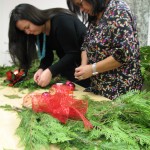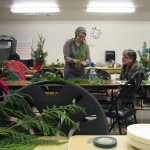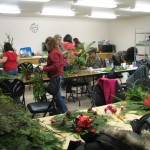www.catalogs.com
Did you know there’s a Web site devoted to the art of regifting? Regiftable.com is a veritable treasure-trove of regifting rules and ideas. The mission of the superslick site, from Money Management International, is to make regifting less shameful. And in these humbuggy financial times, more people than ever are passing things along and around. So in the spirit of cheap-o gift giving, here are our top 10 most regifted items:
10. Booze- The ultimate last-minute hostess gift — an unopened bottle of whatever from your liquor cabinet! Just make sure it truly is unopened and isn’t something that can go bad, like a cream liqueur or a corked bottle of wine. And please, clean off the dust and put it in a nice gift bag.
9. Gift cards- Perfectly acceptable and even a hot commodity on eBay, gift cards are fine to regift if you’re not a fan of the store but know someone who is. Just make sure the gift card hasn’t expired or the store hasn’t gone out of business.
8. Fruitcake – Sure, make fun of the citron-studded brick, but some people actually like them. Especially if they’re made by monks, like the ones from Assumption Abbey.
7. Candles – Candles are fine to regift if you don’t like the scent or the shape. A bad idea (and a dead giveaway) if the wick is burned
6. Cookbooks – Not a fan of Peruvian vegetarian cuisine? Regift away. Make it more special by using wooden spoons as a decorative bow accent.
5. Jewelry – Hey, you can always say that you found the perfect piece at an estate sale, when actually the estate sale was the bottom of your jewelry box. Just get yourself some good jewelry cleaner and you’re good to go.
4. Picture frame- Hey, Mrs. Newlywed, did you get way too many lovely silver picture frames for your wedding? Here’s an idea: Find a picture of your best bud, put it in one of those frames and voila! An instant personal regift.
3. Gift basket – This can either be a great regift or a horrible mistake. Before you slap a bow on an unloved gift basket, make sure the food hasn’t expired or the hand lotion hasn’t gone funky or you’ll have some ‘splainin’ to do.
2. Housewares – Coffee grinders, blenders, wine openers — all can become great regifts with just a simple addition. Add a pound of coffee with the grinder, a drink mix with the blender and a bottle of wine (‘natch!) with the wine opener.
1. Clothing – According to many surveys, clothing is the No. 1 most regifted item. Probably most often the oh-so-cutesy holiday sweater!




















